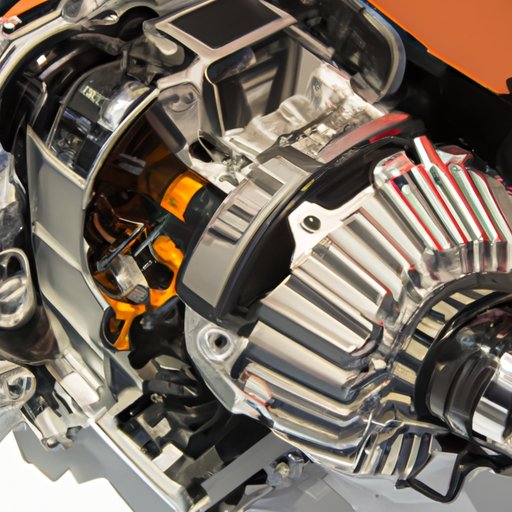Introduction
A hybrid car is a vehicle that combines both a gasoline engine and an electric motor. The purpose of this article is to provide an in-depth look at how hybrid cars work and how their various components come together to create a more efficient and environmentally friendly vehicle.
Step-by-Step Guide to Understanding How Hybrid Cars Work
In order to better understand how hybrid cars work, it is important to first take a look at the different components that make up the vehicle. These components include the gasoline engine, the electric motor, the battery, the transmission, and the regenerative braking system.
The gasoline engine is the traditional internal combustion engine that is found in most vehicles. This engine burns gasoline to produce power and is responsible for providing the majority of the car’s power. The electric motor is what provides the additional power needed to propel the car forward. The battery is used to store energy and can be recharged using either a plug-in charger or by capturing energy from the regenerative braking system.
The transmission is responsible for transferring the power from the gasoline engine and electric motor to the wheels. It is also responsible for managing the shifting of gears as the car accelerates or decelerates. Finally, the regenerative braking system captures energy from the car’s momentum when the brakes are applied and stores it in the battery for later use.
Once all of these components have been identified, it is possible to explore how they all work together to create a hybrid vehicle. When the driver presses down on the accelerator, the gasoline engine and electric motor work together to provide the necessary power to move the car forward. The transmission then directs the power to the wheels and the car begins to move.
When the driver applies the brakes, the regenerative braking system captures the energy from the car’s momentum and stores it in the battery. This energy can then be used to power the electric motor when the driver accelerates again.
An In-Depth Look at How Hybrid Cars Function
Now that the basics of how hybrid cars work have been explored, it is time to take a closer look at the individual components and how they contribute to the overall functioning of the car.
The gasoline engine is the main source of power for the car and is responsible for providing the majority of the car’s power. The gasoline engine works by burning gasoline to produce energy, which is then transferred to the transmission and ultimately to the wheels.
The electric motor is what provides the additional power needed to propel the car forward. The electric motor is powered by electricity stored in the battery and is used to supplement the power provided by the gasoline engine. This helps to reduce fuel consumption and emissions.
The battery is used to store energy and can be recharged using either a plug-in charger or by capturing energy from the regenerative braking system. The battery is also responsible for powering the electric motor when the driver accelerates.
The transmission is responsible for transferring the power from the gasoline engine and electric motor to the wheels. It is also responsible for managing the shifting of gears as the car accelerates or decelerates. The transmission is designed to optimize performance and efficiency.
Finally, the regenerative braking system captures energy from the car’s momentum when the brakes are applied and stores it in the battery for later use. This energy can then be used to power the electric motor when the driver accelerates again.
Conclusion
In conclusion, hybrid cars are becoming increasingly popular due to their increased efficiency and reduced environmental impact. By understanding the basics of how hybrid cars work and exploring the individual components in greater depth, it is possible to gain a better understanding of how these vehicles operate.
Hybrid cars combine a gasoline engine and an electric motor to create a more efficient and environmentally friendly vehicle. The gasoline engine provides the majority of the car’s power, while the electric motor supplements this power to reduce fuel consumption and emissions. The battery is used to store energy and can be recharged using either a plug-in charger or by capturing energy from the regenerative braking system. Finally, the transmission is responsible for transferring the power from the gasoline engine and electric motor to the wheels and for managing the shifting of gears as the car accelerates or decelerates.
By understanding how each of these components works together, it is possible to gain a better understanding of how hybrid cars function. With this knowledge, it is easier to appreciate the benefits that hybrid cars offer and why they are becoming increasingly popular.
(Note: Is this article not meeting your expectations? Do you have knowledge or insights to share? Unlock new opportunities and expand your reach by joining our authors team. Click Registration to join us and share your expertise with our readers.)
